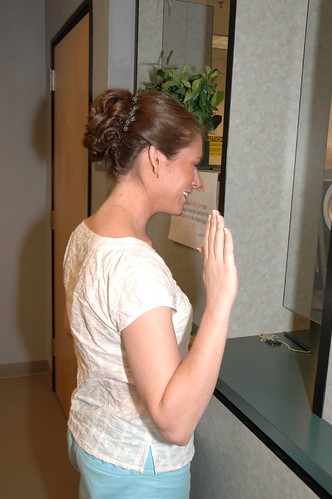THE CENSUS BUREAU TAILORS ITS MESSAGE TO REACH A DIVERSE POPULATION. THE MEMO The U.S. Census Bureau has to reach every single member of the U.S. population every 10 years to record vital statistics. But decade after decade, the bureau has had to struggle more and more to fulfill its goal. In 1970, 78 percent of the population returned their forms; by 1990, the percentage had plummeted by 13 points. If nothing changed, Census 2000 would show the most dismal response rate ever: 55 percent, according to National Academy of Science projections. To stem the tide, the bureau decided to launch a first-ever, paid, national advertising campaign.
THE DISCOVERY Young & Rubicam, New York, led the marketing effort, and reviewed the bureau's own research. A key finding: Census had become worse than irrelevant to Americans - people didn't understand why it was important for them to fill out their forms. The marketing effort would have to make the benefits of responding to the census very clear. Y&R needed to find the most compelling answer to the people's unspoken question: What's in it for me?
Of course, what's in it for the American people is a proper allocation of federal funds - of vital importance, but not exactly sexy or easy to understand. To tie the census to its benefits, Y&R created the tag line that would become the theme of Census 2000: "This is Your Future. Don't Leave it Blank." To craft a media strategy, Y&R developed a "Likelihood Spectrum Model," created with Simmons' syndicated research and overlaid with demographic, psychographic, and media usage data. The ad agency found that 40 percent of Americans fell into the "most likely to respond" category, and would only need a reminder to return their forms - national media would suffice. Forty-three percent fell into the "undecided/passive" category - they were not very familiar with the census, and were apathetic. Another 17 percent of the population fell into the "least likely to respond" segment - those who feared or didn't trust government. Additional media would be required to reach these consumers.
The next challenge: to find a way to create a campaign for Census 2000 that would be consistent throughout the United States, but would also have resonance across the nation's diverse groups. Through a network of research firms that specialize in ethnic subgroups, more than 1,700 interviews were conducted across the country, testing variations on the "It's your future" tag line.
THE TACTICS The media blitz began in November of 1999, and continued until June. More than 250 TV, radio, print, outdoor, and Internet ads, in 17 languages, were created to reach 99 percent of U.S. residents. Approximately 130,000 announcements were carried by more than 3,000 media outlets. The ads shared a theme: They portrayed a piece of American life that would be influenced by census responses - schools, public transportation, highways - and the Census 2000 tag line. Various executions were targeted to reach different markets. To reach blacks, for example, the team learned that it was important to create a strong sense of group identity in their creative executions. The tag line for this group read, "This is our future. Don't leave it blank." For Native Americans who hold their elders and children in high esteem, the tag line read, "Generations are counting on this. Don't leave it blank." For Hispanics, Asians, and those of Eastern European descent, ads included an in-language explanation of what the census was all about, and assured confidentiality.
THE PAYOFF The ad campaign reached its goal: People were motivated to return their census forms. Just two-thirds of those with low exposure to the campaign returned their forms by mail, while 84 percent of people with high exposure to the campaign did so, according to follow-up research. As a result, the percentage of mail returned increased for the first time in the Census' history, to 67 percent. The Census 2000 ad campaign was ranked the second most effective campaign during the first half of 2000, according to AdTrack, a consumer poll conducted by USA Today.
Marketer The U.S. Census Bureau Advertising Agency Young & Rubicam, New York, The Bravo Group, Kang & Lee, G&G Advertising, The Chisholm-Mingo Group Research Companies The Maya Group, The K-Group, Michael Jones, Market Development, Asia Link, Data & Management Counsel, Edna Sanabria Penn Schoen & Berland Associates
Source Citation
Wellner, Alison Stein. "The National Headcount." American Demographics (2001). General OneFile. Web. 3 Nov. 2010.
Document URL
http://find.galegroup.com/gps/infomark.do?&contentSet=IAC-Documents&type=retrieve&tabID=T003&prodId=IPS&docId=A97223028&source=gale&srcprod=ITOF&userGroupName=18551_mcpls&version=1.0
Gale Document Number:A97223028




No comments:
Post a Comment